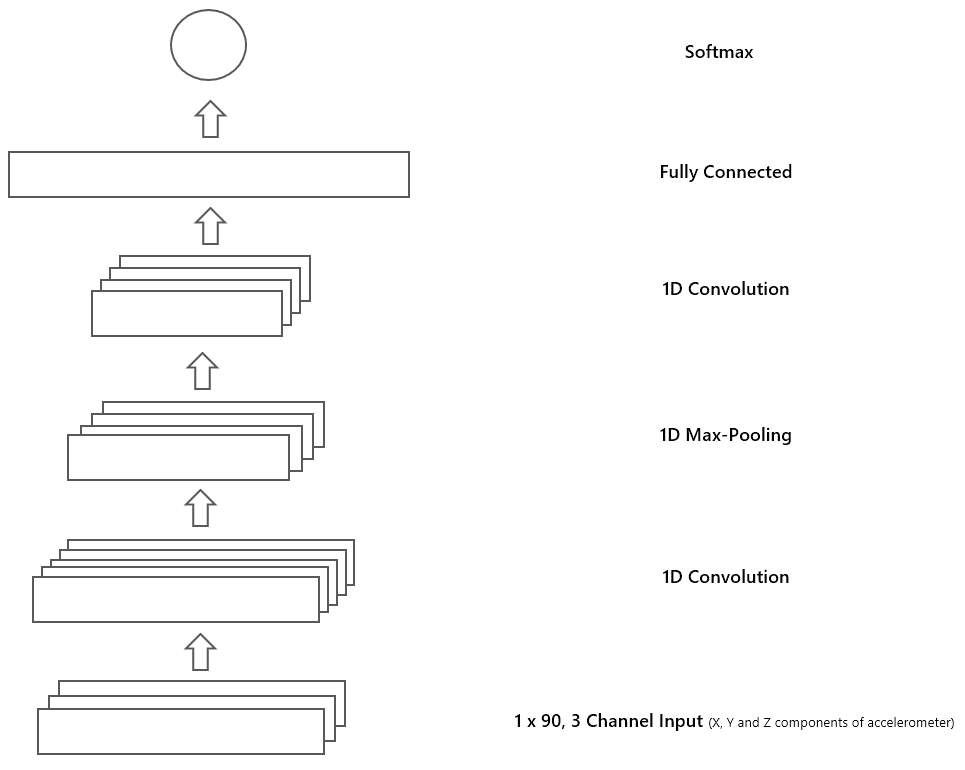Implementing a CNN for Human Activity Recognition in Tensorflow
In this post, we will see how to employ Convolutional Neural Network (CNN) for HAR, that will learn complex features automatically from the raw accelerometer signal to differentiate between different activities of daily life.
The CNN Model
The figure below provides the CNN model architecture that we are going to implement using Tensorflow. If you are comfortable with Keras or any other deep learning framework, feel free to use that. The model will consist of one convolution layer followed by max pooling and another convolution layer. After that, the model will have fully connected layer which is connected to Softmax layer. Remember that the convolution and max-pool layers will be 1D or temporal.
First, let’s define some helper functions and configuration variable for our CNN model. The helper functions will be wrapper around Tensorflow functions to increase reuse and readability. The weight_variable and bias_variable will initialize Tensorflow variables for our model layers. The apply_depthwise_conv (see Depthwise Convolution) will perform 1D convolution on each input channel separately and pass the output through ReLU activation function. Likewise, apply_max_pool will perform 1D max pooling on the output of convolution layer.
Tensorflow placeholders for input and output data are defined next. The first convolution layer has a filter size and depth of 60 (number of channels, we will get as output from convolution layer). The pooling layer’s filter size is set to 20 and with a stride of 2. Next, the convolution layer takes an input of max-pooling layer apply the filter of size 6 and will have a tenth of depth as of max-pooling layer. After that, the output is flattened out for the fully connected layer input. There are 1000 neurones in the fully connected layer as defined by the above configuration. The tanh function is used as non-linearity in this layer. Lastly, the Softmax layer is defined to output probabilities of the class labels.
The negative log-likelihood cost function will be minimised using stochastic gradient descent optimizer, the code provided below initialize cost function and optimizer. It also defines the code for accuracy calculation of the prediction by model.
We have all the required pieces for CNN. Next, let’s write code for training the model. The code provided below, will train the CNN model using a batch size of 10 for 5 training epochs. At each epoch, we will print out the model’s loss and accuracy on the training set. At the end of training, the model will classify the testing set instances and will print out achieved accuracy.
In this blog post, we saw how to process accelerometer data set for CNN input, visualise it and train a deep network to classify 6 daily life activities using Actitracker dataset. If you have any question or feedback, please comment below.

Bio: Aaqib Saeed is a graduate student of Computer Science (specializing in Data Science and Smart Services) at University of Twente (The Netherlands).
Original. Reposted with permission.
Related:

